Ten years ago, on May 31, 2003, the Amber Room at Tsarskoye Selo near St.Petersburg was open to the public.
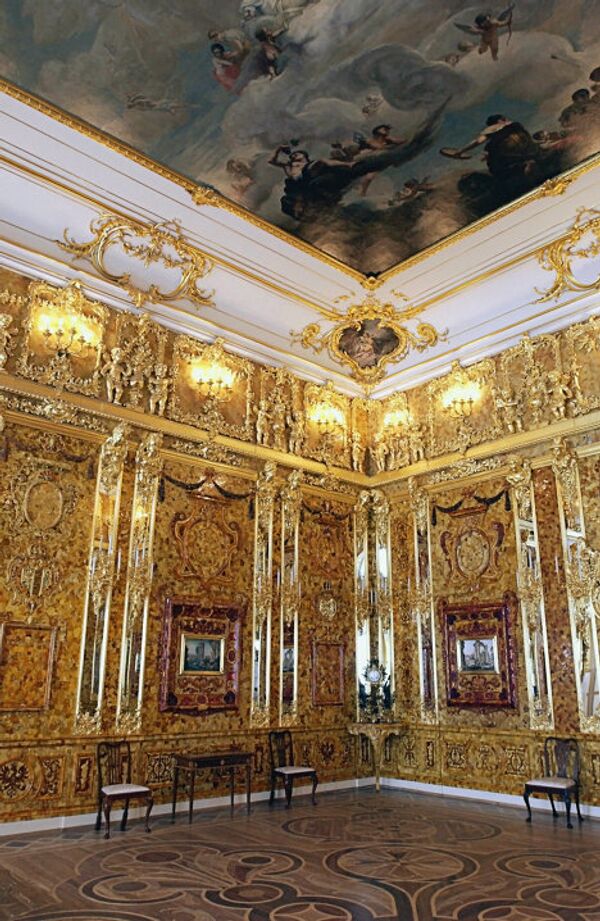
Ten years ago, on May 31, 2003, the Amber Room at Tsarskoye Selo near St.Petersburg was open to the public. The Amber Room has, in a sense, been a symbol of Russian-German relations for almost three centuries. It was originally created in Prussia, then given to Russia, then stolen by the Nazis during World War II and later restored by Russian craftsmen. Photo (2003): the Amber Room of the Catherine Palace, Tsarskoye Selo Museum, the town of Pushkin (outside St. Petersburg).
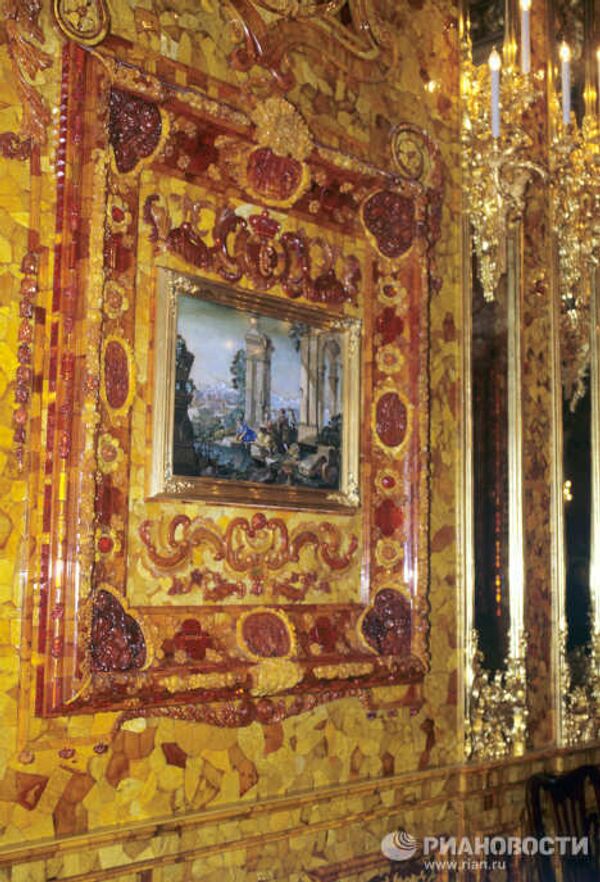
The original Amber Room is believed to have been designed by the architect Andreas Schlüter. At the time, he was restoring the Berlin City Palace (Stadtschloss) and decided to use amber to decorate an interior, for the first time in history. Photo (2002): the amber frame with the restored Florentine mosaic “Sound.” A detail of the northeastern wall of the restored Amber Room in the Catherine Palace.
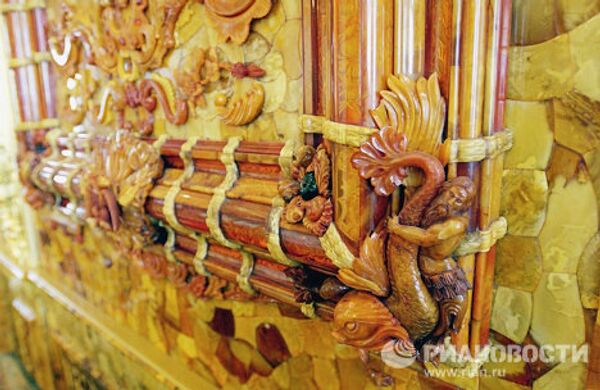
Rumors of this unusual amber room reached Peter the Great. The Russian tsar-reformer wanted to get the room at any cost for his Kunstkamera museum. Photo (2003): a detail of the Amber Room’s interior in the Catherine Palace, Tsarskoye Selo Museum, the town of Pushkin (outside St. Petersburg).
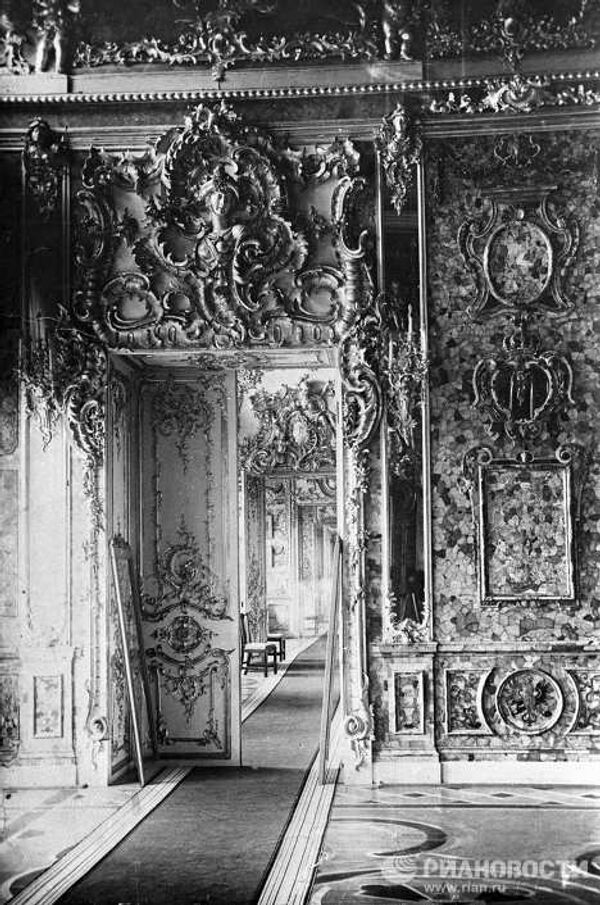
In 1716, Frederick William I gave the Amber Room to Peter the Great as a diplomatic courtesy. Photo: a reproduction of a pre-war photo of the Amber Room.
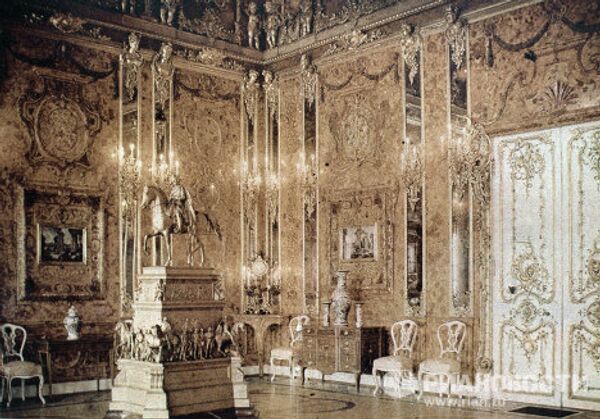
Photo (1932): the Amber Room in the Catherine Palace.

The Amber Room was last redesigned in 1770 when, on the order of Catherine the Great, the room’s decoration was altered. The room was restored five times. There were plans to restore it again in 1941. Photo: a reproduction of a pre-war photo of the Amber Room.
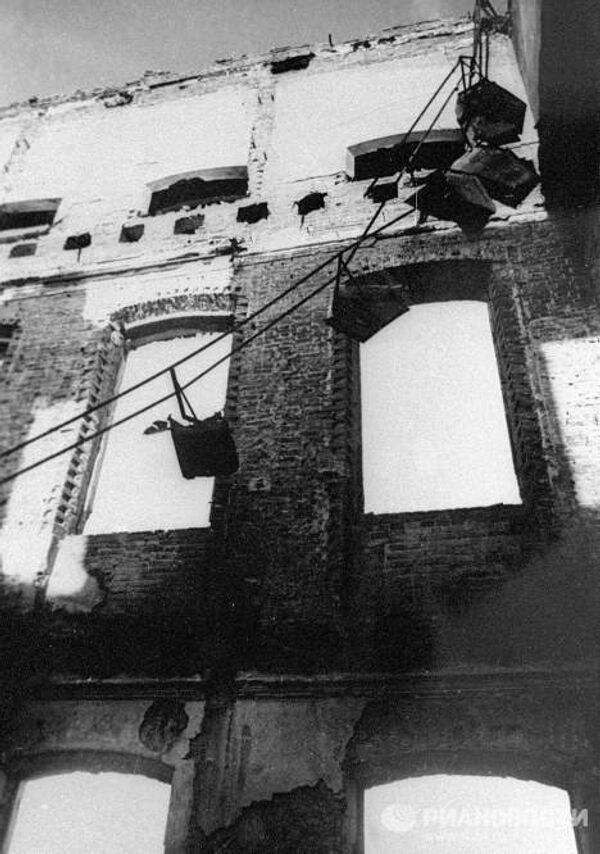
During World War II, the Amber Room was not evacuated to the safety of the rear due to its fragility. It was covered with paper, gauze and cotton wool, but it still was not salvaged. The occupying forces took it to Königsberg. Photo (1945): Windows of the Amber Room in the Catherine Palace that was destroyed by the German Nazi invaders during World War II.
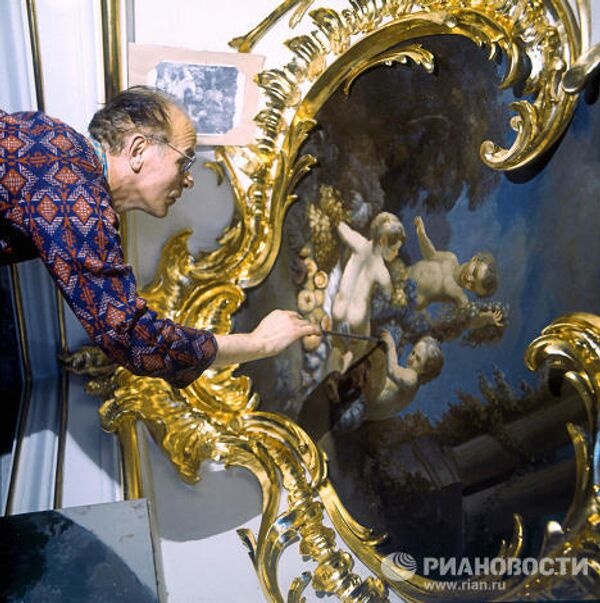
In the late 1970s, the R.S.F.S.R. Council of Ministers ordered the restoration of the Amber Room. Photo (1978): Painting a plafond in the Amber Room in the Catherine Palace.
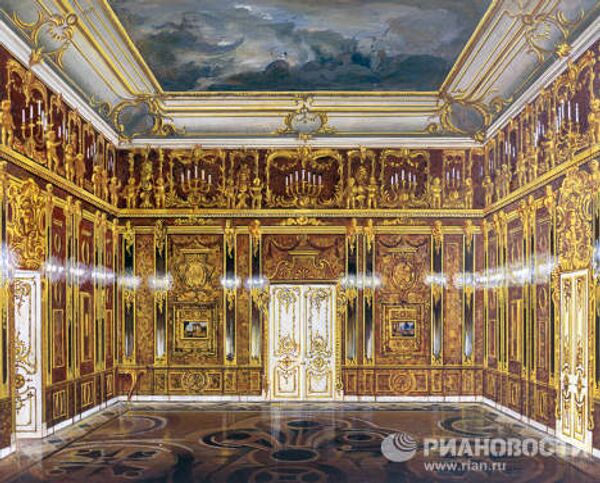
Model of the Amber Room made on the basis of the pre-war photos. 1979 reproduction.
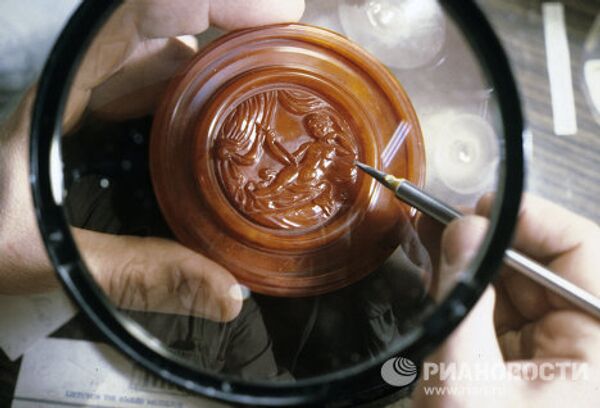
In 1983, Russia began the reconstruction of the Amber Room; it was 40% complete by November of 1996. Photo (1990): making a decorative detail for the Amber Room.
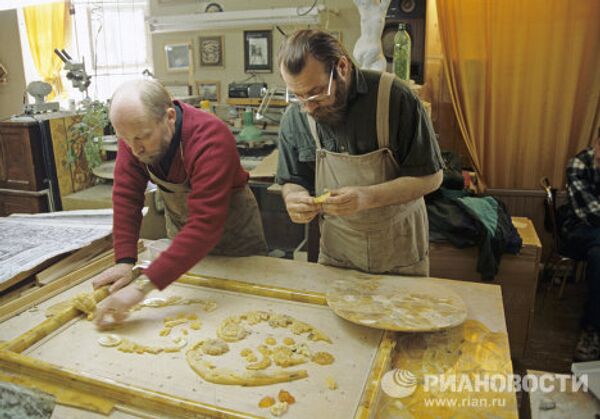
Forty specialists were engaged in this work.
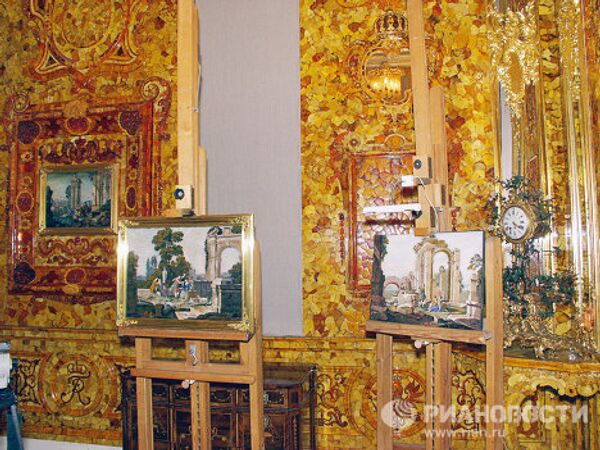
On April 29, 2000, German Minister of Culture Michael Naumann gave a piece of the original Amber Room to acting President Vladimir Putin. Photo (2003): a detail of the Amber Room’s southern wall in the Catherine Palace with the restored copies of the Florentine mosaic “Sight” (left), “Sound” (right), and “Touch and Smell” (center).

